Analysis
The 4 Glass Ceilings: How Women Artists Get Stiffed at Every Stage of Their Careers
Several new studies examine precisely how much worse women fare in the art market than their male peers. It's not a pretty picture.
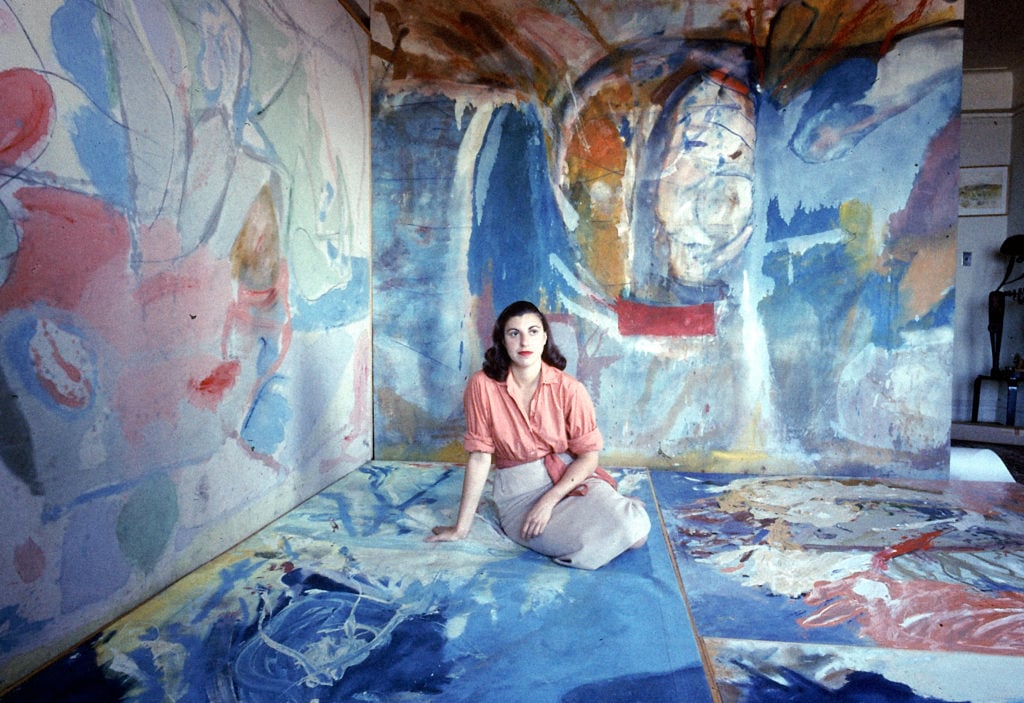
Several new studies examine precisely how much worse women fare in the art market than their male peers. It's not a pretty picture.

Julia Halperin

By now, it has been well established that it’s hard for female artists to make it in the art world. But when it comes to attaining art-market success, new research suggests it’s even more difficult for women than you may have thought.
The dismal findings are part of a joint study released this week by artnet Analytics and Maastricht University, and they quantify what many female artists already know too well: Men rule the art market, while women must struggle to move up each and every rung of the ladder.
The study’s authors—Fabian Bocart, Marina Gertsberg, and Rachel Pownall—used artnet’s database to examine 2.7 million auction results for Western artists, compiled from public sales between 2000 and 2017; they also scrutinized the rosters of 1,000 galleries in artnet’s gallery network, which cumulatively represent 4,750 living Western artists.
The authors describe the project as the largest empirical study ever conducted on gender discrimination in the cultural sector. And the results, they say, “reveal strong evidence for discrimination against female artists in the market for fine art.”
But the findings, disheartening as they are, also come with a surprising twist. If a woman manages to break into the boys’ club and find some measure of art-market success—and that’s a big if—she is likely to be, on average, more successful than her male counterparts.
Ascend to the very highest altitude of the auction market, however, and women disappear entirely.
Indeed, the full study demonstrates that there are four glass ceilings for women along their career trajectories. Below, we’ve broken down what the findings mean for an artist at each stage in her career.
Good news, ladies: You are just as likely to get into an elite MFA program as male students are. According to a newly released study by the Yale School of Management, the ratio of male to female students at the university’s elite art school became about equal in 1983. It has remained consistent ever since.
But if you think that means you’re equally likely to get picked up by a gallery after you graduate, think again. According to the artnet and Maastricht study, only 13.7 percent of living artists represented by galleries in Europe and North America are female.

Here’s how the number of male (left) vs. female (right) artists represented in artnet’s database compare by generation. © artnet Analytics 2017.
The study’s co-author, Marina Gertsberg, notes that galleries may discriminate for the same reason the broader market does: they’re skeptical about emerging female artists’ “likelihood of future success.” Dealers may be concerned that a woman will take time off to have children and raise a family—thereby making her career trajectory and prospective output less reliable than that of a man.
If that’s not bad enough, the authors reference other studies that show women also have less access to “boys’ club” social circles that might help them get through the door of a reputable gallery. And if they are not certain they can support themselves through their work, these studies suggest, women are more likely to pursue alternate career paths.
The Upshot:
Enjoy art school, because it’s the last time you’ll be on an equal playing field with your male peers.
So you’ve been out of school for a few years and managed to secure gallery representation. It’ll be smooth sailing from here on out, right? Not so fast.
In an effort to determine how easy it is for an artist to transition from emerging to established status, the study’s authors examined how many saw their work pass from the primary market (galleries) to the secondary market (auction houses). They found that out of 4,180 male artists, 96.9 percent experienced their work being resold into the secondary market. However, only 93 percent of the 574 female artists under examination made the same market transition—a statistically significant difference. Put another way, the proportion of living female artists decreased by 15 percent in the leap from the primary to the secondary market.
(The authors also note that the true drop-off in women may be even larger, since they are only examining artists represented by galleries that can afford to participate in the artnet gallery network—where members must pay a subscription fee—and therefore likely have some kind of collector support already.)
Now comes the good news. The women who do manage to make it into the secondary market tend to outperform men once they get there. Collectors pay a premium of six percent for work by female artists, researchers found. The median price for a work sold at auction is $4,138 for women and $3,648 for men. (Notably, no artist—regardless of gender—profits directly from works sold at auction, but the sales can boost their prices on the primary market.)
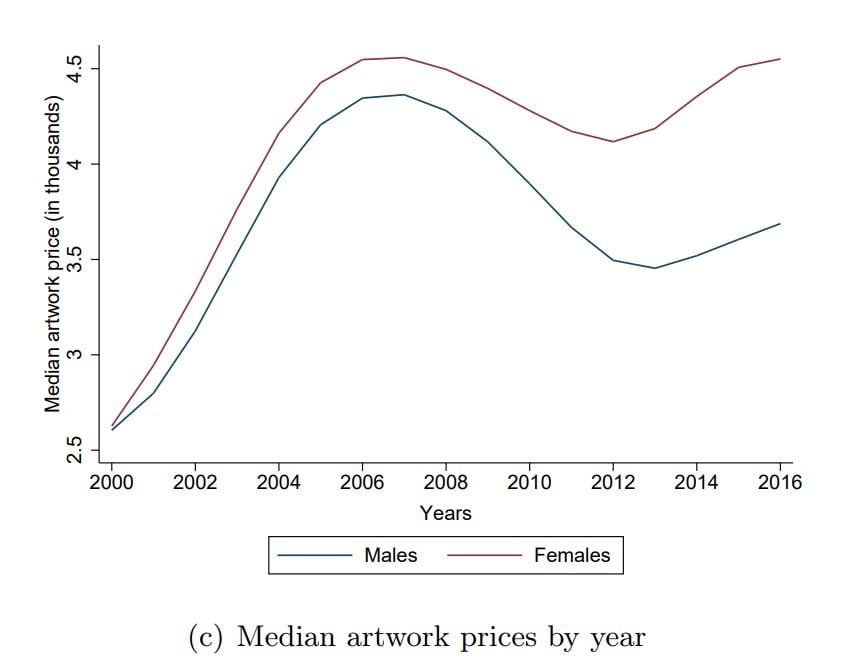
Median artwork prices by year. © artnet Analytics 2017.
The researchers suggest that the reason for this premium is twofold. First, women who manage to beat the odds and make it into the secondary market probably produce better—or at least more sought-after—work than the average male artist, who faces a lower barrier to entry. Second, because there are so few women at this stage, there is a supply squeeze, and collectors are willing to pay up to get their work.
The Upshot:
It’s a lot easier to be a mediocre but reasonably successful artist if you are a man.
That was the good news (yes, really). Here is the bad news. The “winner-takes-all” dynamic in the art market—in which a small number of elite members enjoy a disproportionate amount of the profits—affects women even more acutely than it affects men.
In fact, just 143 female artists—or 2.6 percent—were responsible for 91 percent of all sales of work made by women sold at auction between 2000 and 2017, according to the survey. In other words, researchers found that there is outsize demand for the limited number of artworks created by this small cadre of top female artists. For male artists, on the other hand, profits are distributed slightly more equitably.
As Gertsberg notes, there are few explanations for this phenomenon beyond pure and simple discrimination. “Concerns about the likelihood of future success should go away by the time the artist is in the secondary market and established—but they don’t,” she says.
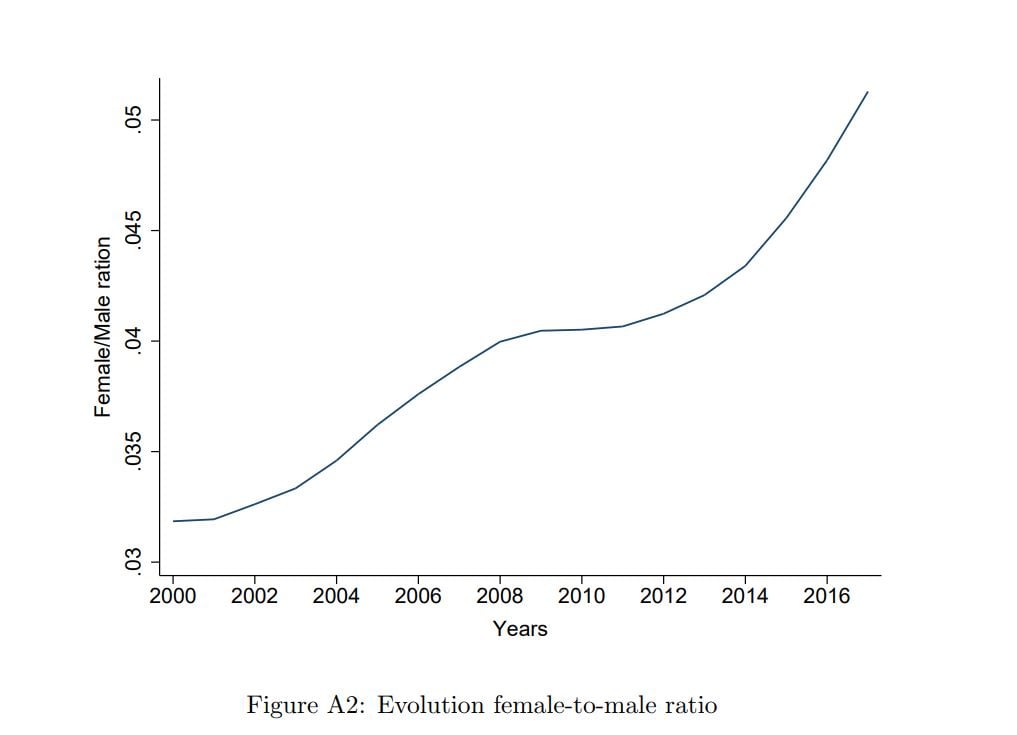
How the ratio of female to male artists in the artnet Price Database from all historical periods changed over time. © artnet Analytics 2017.
So while the average woman’s art sells at auction for six percent more than that of the average man, the situation flips if you control for the relatively large number of pricey works created by a small number of artists at the top. In that case, art by women sells, on average, at a discount of eight percent. This means that if you prevent the superstars from skewing the results, women actually fare worse at auction than men do.
The findings are consistent with another new study recently released by Luxembourg University, which found that people—and particularly affluent males—tend to rate work by women lower than work by men.
The Upshot:
It’s hard to make a living as a female artist—but it’s extremely difficult to become a market superstar.
So you’ve had a major museum survey, you’ve been written into art history textbooks, and, odds are, you are dead. (Congratulations! Also, sorry.) Do you finally have a shot at giving the men a run for their money? Sadly, no.
The study’s authors identify Joan Mitchell as the most expensive female artist, with total sales clocking in at $390 million between 2000 and 2017. (Georgia O’Keeffe comes in second with $247.2 million.) But Mitchell only came in 47th on the list of all best-selling artists.
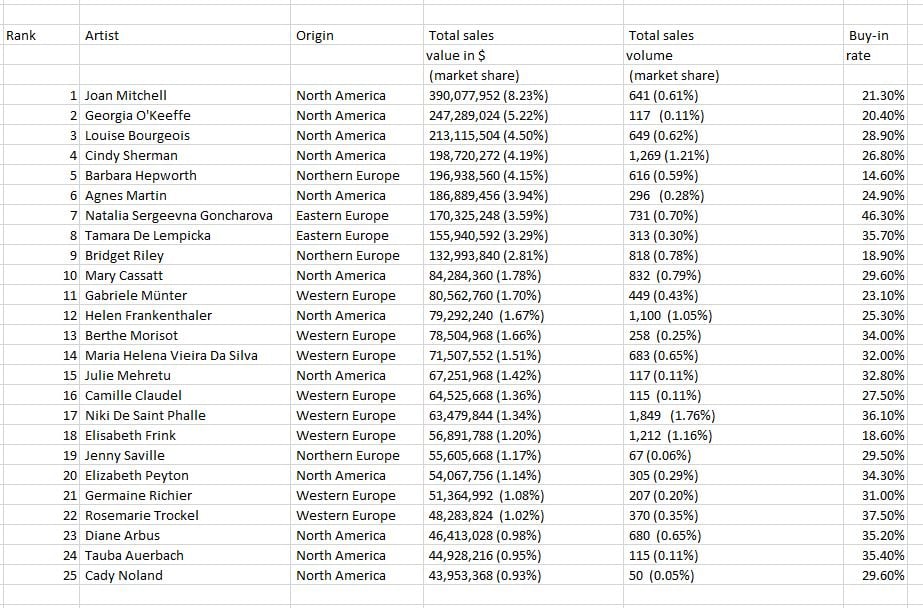
Top-selling female artists. © artnet Analytics 2017.
The top artist, Picasso, sold a staggering $6.2 billion worth of art over the past 17 years. Andy Warhol came in second with $4.9 billion. Both of them, individually, sold more art than every single female artist in the database combined. That’s a total of 5,612 women.
Indeed, there are zero female artists in the very top slice of the art market—the top 0.03 percent—which accounts for more than 41 percent of the overall profits.
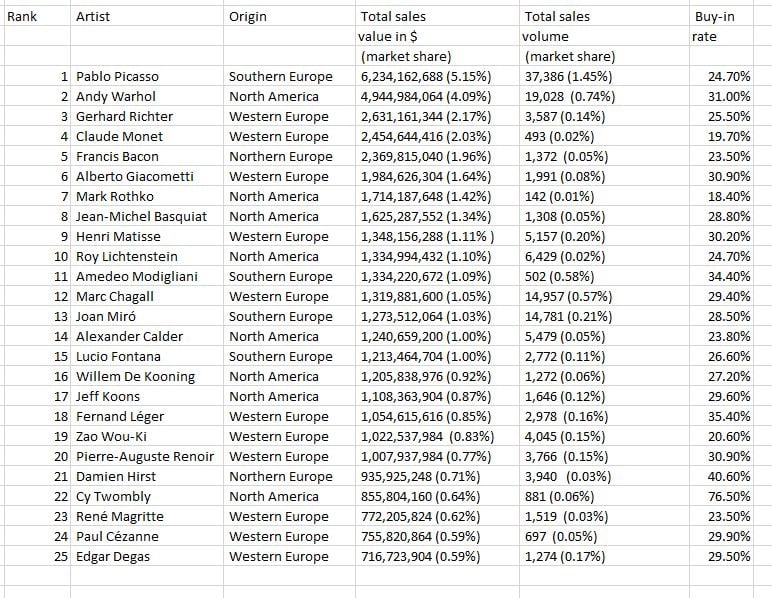
Top-selling male artists. © artnet Analytics 2017.
Looking for someone to blame? Gertsberg says there isn’t one culprit. “It’s hard to disentangle whether it’s collectors or institutions,” she says. “We hypothesize it’s the whole market.”
The Upshot:
The art market reflects broader biases both in the art world and in the real world. Until the bigger systems change, the market won’t either.